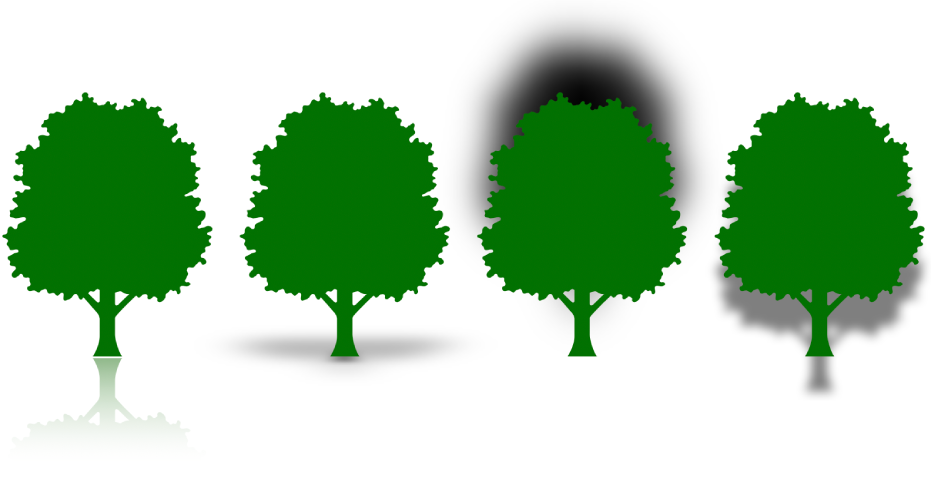No Tree No Shade Mac OS
Since 1985, Windows has always shipped with a basic image-editing program: Paint. For MacOS, there’s no native equivalent, whether you’re running the latest version or an older one. Shades is a free brightness control for Mac OS X. Shades is a FREE utility for controlling the brightness of your screen. It runs in the background providing always-available fine-grained control over the brightness of your display via a slick Mac-like interface. The follow-up to the groundbreaking Black Queer Studies, the edited collection No Tea, No Shade brings together nineteen essays from the next generation of scholars, activists, and community leaders doing work on black gender and sexuality. Building on the foundations laid by the earlier volume, this collection’s contributors speak new truths.
Apple trees will grow in a variety of different shade and sun conditions. The number of hours of direct sunlight is not the only factor that will determine optimal growth. Whether the apple tree receives morning sun or afternoon sun, and what direction the apple tree is facing, are also important factors.
Ideally, apple trees will need 8-10 hours of direct sunlight for optimal growth, pollination and fruit product in your yard. But a minimum of 6-8 hours per day of direct sunlight can do just fine, depending on whether the apple tree receives morning sun, or afternoon sun.
What is Full Sun?
Full sun is considered a minimum of 6 hours of direct, unfiltered light per day, but whether those hours are morning hours or afternoon hours has a huge impact on the growing conditions. An apple tree that gets full sun all morning but is shaded in the afternoon has a much different growing environment than one shaded from the sun in the morning but exposed to full sun in the afternoon.
Afternoon sun is brighter and hotter, while morning sun is less harsh. Some fruit trees will have a hard time in the scorching afternoon sun, so it is best to first observe your planting site and record what areas of your yard are shaded, at 1 hour intervals throughout the day.

How to Record Sunlight
On a sheet of paper, sketch out the shape of your yard, and overlay a grid layout. Number each grid.
On a separate sheet of paper, create a table with the grid numbers going down the left side of the page from top to bottom, and the hours of the day along the top from left to right. From dusk till dawn, record the sunlight of each grid as either full sun, partial sun, or shade.
At the end of the day, tabulate the number of full sun hours in each zone, and transfer those numbers to the sketch of your yard. Mark down whether the grid gets predominantly morning sun or afternoon sun. This should give you a few good options as to where to plant your apple tree.
Remember that the sun changes positions in the sky throughout the year. An area that is mostly shade in spring and fall may get more intense sunlight in the summer when the sun is higher in the sky (and hotter).
How to Map Shade
If you have a planting site already picked, another option is to map the sun throughout the day over that specific area.
Similar to before, map out your yard and any tall structures nearby that would potentially cast a shadow over your planting area, such as your house, shed, surrounding trees and forests, or even your neighbours house.
Throughout the day, observe the planting site and draw a shadow line and record the time of day. At the end of the day, you should have a yard map with several shade lines drawn over it. This will give you an idea whether that planting site gets enough sun throughout the day and what time of day shadows are being cast on it.
Make sure to do this exercise on a summer day. Wait until all your trees have their leaves, as this can affect the type of shadow they cast. Choose a sunny day; a cloudy day will make it more difficult to see the shade lines.
Backyard Micro Climates
Another factor to consider when choosing a planting location for your apple tree is any micro climates. Know your directional exposure to wind and rain.
Observe the topography of your yard. If your potential planting site has high and low elevations, chose a higher spot. A higher planting site will be warmer by up to 2° F and will usually receive more sunlight. Cold air will flow downhill, and low lying land can create cold pockets where a late frost can kill your apple blossoms.
An ideal location would be a northern or eastern slope, with the apple tree planted near the top in a sunny location.

How Much Sun Does My Apple Tree Need?
Based on your observations and mapping, you now know exactly what time of day each zone of your yard is in full sun, partial sun, or full shade. You know what obstructions are casting shadows where, and maybe have a few options for the perfect place to plant your apple tree. To narrow it down even further, here are a few tips.
Does the planting location receive morning light or afternoon light?
Apple trees prefer morning light. It helps dry up the morning dew that forms on the leaves and blossoms to reduce the chance of fungus and diseases. If you selected a planting location that receives mainly morning light, target 8-10 hours of sunlight. A location that receives mainly the stronger afternoon sun can get away with 6 hours of sunlight per day.
No Tree No Shade Mac Os Update
Prevent Sunburn
No Tree No Shade Mac Os Catalina
The canopies of young apple trees are generally not large enough to provide shade for the their own tree trunk and can suffer sunburn from being exposed to too much afternoon sunlight. For the first few years, protect the trunk and large branches from the scorching sun by painting them white.
Use a mixture of equal parts white latex paint and water to paint their trunks and large branches exposed to the sun. The paint protects the exposed areas and reflects sunlight. Use this method for the first few seasons, until the tree develops a large enough canopy to protect its trunk and limbs.
Another option is a white tree wrap. Tree wraps are available at most nurseries and will reflect the sunlight, but also protect the base of the tree from critters like mice, rats and rabbits that chew on the young, tender bark.
Why is sunlight so important to apple trees?
Apple trees need sunlight to produce healthy fruit with good colour and flavour. Branches exposed to sunlight produce bigger fruit than branches exposed to less sunlight. When branches are shaded, they set smaller apples and of lesser quality. For this reason, it is important to prune the apple tree to a central leader to increase airflow and sunlight to the lower canopy.
In the spring before the buds start forming, prune any branches that face towards the middle of the apple tree, and any branches that criss-cross. This will optimize the amount of branches that receive sunlight. After all, apple trees convert sunlight into energy to create fruits.
Converting sunlight into Energy
Apple trees, like all plants, convert sunlight into energy through photosynthesis. Without sufficient sunlight, apples tree branches that are shaded would not be able to create enough energy (glucose) to produce fruit.
Apple tree leaves contain chlorophyll, a pigment that absorbs the blue and red wavelengths of light and convert it into energy.
Fun Fact: Chlorophyll does not absorb green light, it reflects it, which is why the leaves of apple trees are green.
Chlorophyll creates energy by absorbing the sun’s energy and converting it into chemical energy, which is captured within the bonds of carbon molecules as glucose. Where do the carbon molecules come from? Carbon dioxide, which it absorbs from the atmosphere, and water. Yes, the same carbon dioxide we breath out.
Each year, apple trees use the left-over carbon molecules to add to themselves, making themselves bigger, growing new roots, branches, leaves, fruits and seeds.
Through creating energy, chlorophyll also releases oxygen as a waste product.
So without enough sunlight, the apple tree would not be able to absorb enough of the sun’s energy, that it uses to keep itself alive and produce apples.
Related Questions
How do I plant an apple tree? Now that you’ve selected the perfect backyard planting are, read our guide on planting an apple tree the right way in 5 easy steps. By taking time to choose the right location first, you will set your apple tree up for success, and abundant harvests for years to come.